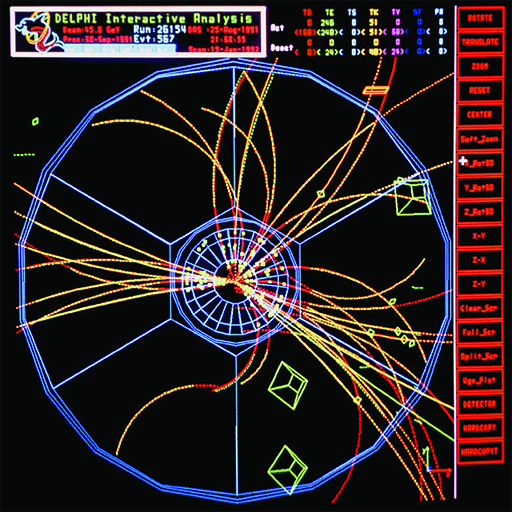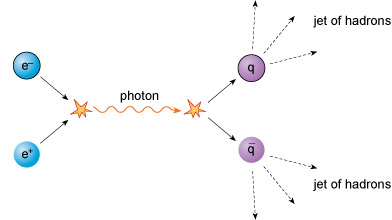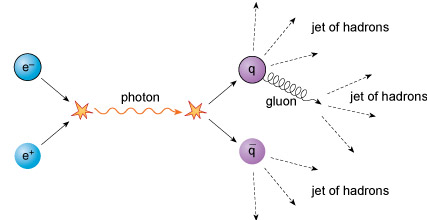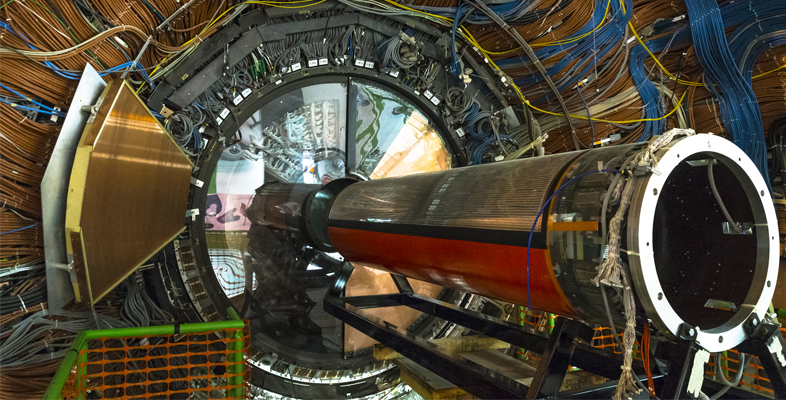6.1 Gluons
It is amazing just how strong the strong interaction between quarks is. At a separation of around 10−15 m – the typical size of a proton or neutron – the force of attraction between a pair of quarks is equivalent to the weight of a 10-tonne truck! As might be suggested by its name, the strong force of attraction between two up quarks is much larger than the electric force of repulsion between them. It is this strong force that prevents quarks from being liberated in high-energy collisions. Free quarks are never seen to emerge from such processes: quarks only exist confined within baryons or mesons. It is as if they are stuck together with very strong glue.

A clue concerning the nature of this ‘quark glue’ can be seen in high-energy experiments such as those conducted at CERN. When high-energy beams of electrons are collided with equally high-energy beams of positrons travelling in the opposite direction, it often happens that hadrons emerge as a pair of jets, with each jet made up of a number of hadrons.
The basic interaction that produces the pair of jets is as follows. First, the electron (e−) and positron (e+) annihilate each other and produce what is known as a virtual photon. The reason for this name is that the virtual photon only has a temporary existence and immediately undergoes a pair creation event, giving rise to a quark–antiquark pair. Their kinetic energy and mass energy is almost immediately converted into the kinetic energy and mass energy of many more matter and antimatter particles, including lots more quarks and antiquarks. The many quarks and antiquarks then combine to form a variety of hadrons, and it is only the hadrons that then emerge from the collision as a pair of jets.

But this is not the whole story: sometimes three jets may be produced. This process involves a particle you haven’t met so far, the gluon. Gluons are the quanta of energy whose emission and absorption are regarded as the origin of strong interactions. They are responsible for ‘gluing’ the quarks strongly together inside hadrons. However, unlike photons – but like quarks and antiquarks – gluons cannot escape to large distances.
Nonetheless, a quark (or indeed an antiquark) may emit a gluon. The mass energy and kinetic energy of the gluon is quickly turned into the mass energy and kinetic energy of further pairs of quarks and antiquarks. These in turn combine with each other to form various hadrons, and the hadrons produced from the gluon then give rise to a third jet emerging from the process.

